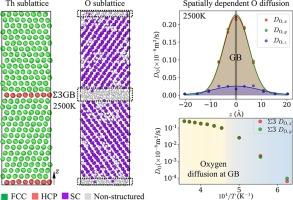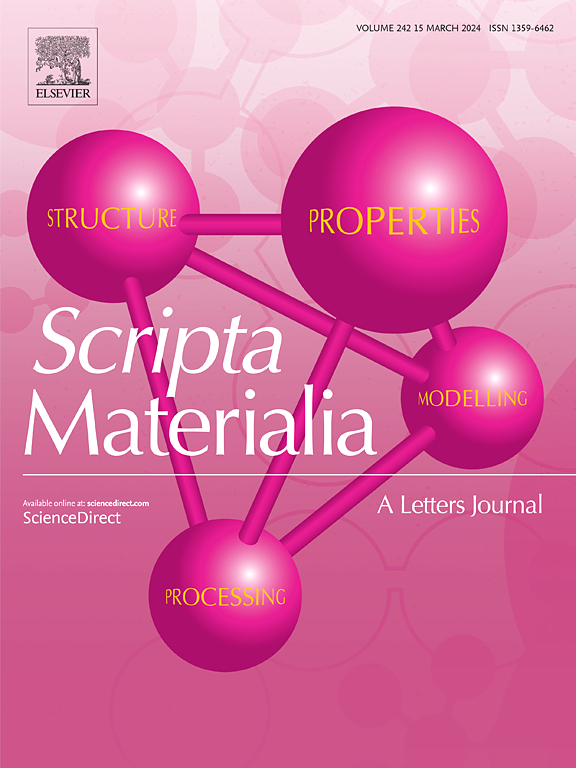ThO2中沿相干Σ3晶界的异常离子电导率
IF 5.6
2区 材料科学
Q2 MATERIALS SCIENCE, MULTIDISCIPLINARY
引用次数: 0
摘要
了解氧沿晶界扩散是控制氧化物陶瓷中离子电导率的关键。由于结构紊乱和自由体积的增加,通常认为gb可以增强离子传输。在这项研究中,我们报告了一个意想不到的异常现象:二氧化钍(ThO2)中的Σ3(111) GB,尽管其结构紧凑且连贯,但与更开放的GB(例如Σ19)相比,表现出明显更高的氧离子电导率。通过原子模拟,我们发现Σ3 GB中的高电导率是由集体扩散机制引起的,涉及高度相关的原子运动,使人联想到超离子状态。而Σ19 GB则遵循常规管道扩散,与其更开放的结构相一致。这一比较突出表明,增强的GB电导率可能来自于能够实现集体运输的特定结构基序。这些发现为设计具有靶向离子输运特性的gb工程氧化物提供了新的指导。本文章由计算机程序翻译,如有差异,请以英文原文为准。

Anomalous ionic conductivity along the coherent Σ3 grain boundary in ThO2
Understanding oxygen diffusion along grain boundaries (GBs) is critical for controlling ionic conductivity in oxide ceramics. GBs are typically thought to enhance ionic transport due to structural disorder and increased free volume. In this study, we report an unexpected anomaly: the GB in thorium dioxide (ThO2), despite its compact and coherent structure, exhibits significantly higher oxygen ionic conductivity compared to the more open GBs (e.g., Σ19). Using atomistic simulations, we revealed that the high conductivity in the Σ3 GB arises from a collective diffusion mechanism involving highly correlated atomic motion reminiscent of a superionic state. In contrast, the Σ19 GB follows conventional pipe diffusion, consistent with its more open structure. This comparison highlights that enhanced GB conductivity can occur from specific structural motifs that enable collective transport. These findings provide new guidance for designing GB-engineered oxides with targeted ionic transport properties for energy applications.
求助全文
通过发布文献求助,成功后即可免费获取论文全文。
去求助
来源期刊

Scripta Materialia
工程技术-材料科学:综合
CiteScore
11.40
自引率
5.00%
发文量
581
审稿时长
34 days
期刊介绍:
Scripta Materialia is a LETTERS journal of Acta Materialia, providing a forum for the rapid publication of short communications on the relationship between the structure and the properties of inorganic materials. The emphasis is on originality rather than incremental research. Short reports on the development of materials with novel or substantially improved properties are also welcomed. Emphasis is on either the functional or mechanical behavior of metals, ceramics and semiconductors at all length scales.
 求助内容:
求助内容: 应助结果提醒方式:
应助结果提醒方式:


